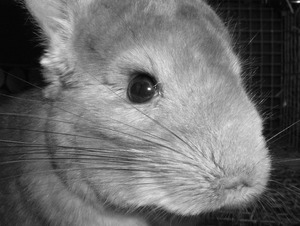When shopping for a fur, it can be a very good idea to know something about the various types of fur available on the market, their origins, and which furs are more expensive and why. This article lists five different furs, each with specific information to assist you in your fashionable shopping.
Before we list the individual furs, please note that there are even more options available to the consumer, besides just fur type, size, and price. Fur can now be knitted, woven, sheared or plucked, or even dyed in almost any color imaginable! Knitted or woven fur is precisely that: fur material knitted or woven together, sometimes with other materials, in order to create pleasing patterns and styles. Plucking and shearing is specifically explained within the information on beaver fur, as it is commonly done with that type of fur, although sheared or plucked minks can also be found. Almost any fur can be dyed, in virtually any color, including wild pinks, yellows, blues, and more. All of these options should be explored, and virtually all fur designers now offer an incredible range of unique fur garments based on these opportunities, as well as continuing to offer the classic, full fur coat or jacket. As an extra note, select a fur that either closely matches or sharply contrasts with your hair color, such as a red fox for a redhead, or a pure white fox for dark, black hair.
Beavers are a common North American water mammal. Their fur is supplied primarily through hunting and trapping, which is conducted under strict limits and supervision, in order to preserve and perpetuate the species. Beaver fur has two layers; a thick, long outer layer, for repelling water, and a short, soft under layer, for retaining warmth. Fur designers sometimes use both layers when putting fur trim on a non-fur garment, but often use plucked or sheared beaver for a full beaver fur coat. Plucking or shearing the fur means that the other layer of thick, long fur has been removed, in order to reveal the softer, interior layer. This reduces the weight of the fur, making it more suitable for a larger fur coat. The soft under layer of fur is also considered the most attractive. Beaver is an economical and fashionable choice, due to its common use.
Sables are small mammals that resemble weasels or minks. They are found in Russia, and, to a small extent, Japan. Sables are both hunted in the wild and raised on farms, again under strict rules to ensure the health and continuation of the species. Sable is the most expensive of all furs, with a dark brown color and a soft, rich pelt. It has been used throughout history on royal garments, the famous Russian fur hats, and to make the shtreimel, a hat worn by Hassidic Jews on religious holidays. It is used by modern designers as the highest luxury fur, and a full sable coat can easily cost $75,000.
Chinchillas are small mammals that are originally from South America. They are raised on fur farms in Europe as well as the Americas, and their fur has a light, grey color, with some examples of black and white highlights. Chinchilla is very soft and short, and is usually used either as trim on a garment, or to make a small fur item. However, it can also be used for a full fur garment, though this is quite expensive, and a powerful social status symbol.
Minks are a small water mammal, similar to the sable, otter, and beaver, and their pelts have been used for hundreds of years, due to their warmth and attractiveness. Minks are found and farmed throughout North America and Europe. Mink fur is short, dense, and lightweight, and these qualities have made it the most popular farmed and purchased fur in many parts of the world. Mink is found in all forms from trimmings and small accessories to full sized coats, and can be priced quite low or quite high, depending on the size and uniqueness of the garment.
Finally, the fox is a small, predatory mammal, related to wolves and jackals, and is found throughout the globe. Its hide can be a variety of colors, from a rich red to pure white, depending on the sub-species and season. Foxes are generally hunted and trapped, within strict conservation regulations, and the pelts sold to dealers for use in clothing. Fox fur can be found as trim, wraps, stoles, and boas, and is also very popular for use in full fur coats and jackets. It is moderately priced, depending on the color of the fur. White fox fur, which can only be obtained during winter months, is more expensive than red fox fur, for example.
With these differences and options in mind, you are more prepared for your fur shopping, whether in a fur salon or department store, or online. Be sure to ask as many questions as you wish; the staff is there to help you and has much attention invested in every sale. Happy shopping!



